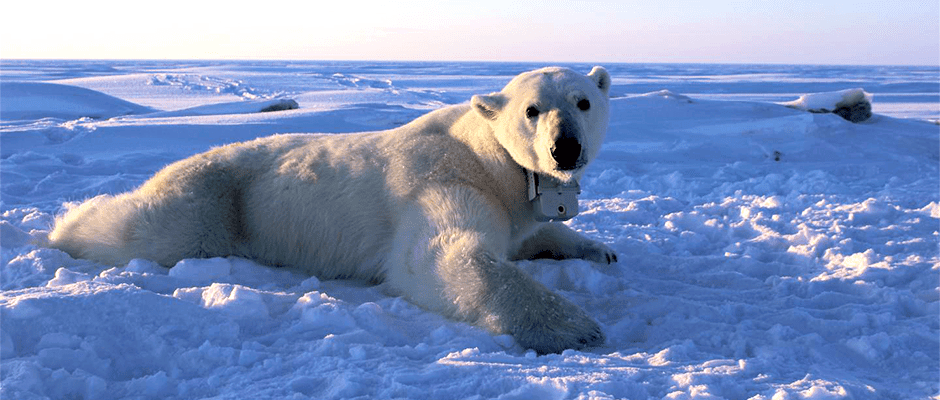Share this article
In warming Arctic, polar bears can’t catch enough seals
Some polar bears (Ursus maritimus), aren’t catching enough seals (Pusa hispida) to meet their energy demands, according to new research.
For the past 20 decades, the U.S. Geological Survey has documented declines in abundance, survival rates and body conditions of polar bears in the Beaufort Sea, said Anthony Pagano, a research wildlife biologist with U.S. Geological Survey and lead author of the study published in Science.
“The evidence suggests this is related to changing ice conditions,” he said. “Now, we’re trying to better understand how they’re specifically being influenced by these changing ice conditions. We want to better understand how they’re going to continue to respond to forecasted declining sea ice.”
The researchers set out to determine how many seals polar bears need to catch during the month of April compared with how many seals they were actually able to catch. From April to July, polar bears catch the majority of their prey and gain most of the body fat they need for the year, Pagano said.
Researchers used a variety of techniques, including GPS satellite collars equipped with video cameras and metabolic trackers placed on nine female polar bears. They used accelerometers to measure behavior of the bears, and they measured their blood biochemistry to determine if they were fasting or not.
“It was really a pretty sizable suite of information,” Pagano said.
Of the nine bears studied, five lost body mass, meaning they weren’t catching enough seals to meet their energy demands.
The team also found that the bears’ metabolic rate was about 50 percent higher than previous predictions. Prior predictions came from rough estimates of how many seals the bears might need to eat over the course of a year, Pagano said, but this study was able to quantify their metabolic rates.
Pagano said theories previously predicted that the a prolonged fast could slow down the bears’ metabolic rates — almost to the levels the bears demonstrate when they den or hibernate. But the team found out this wasn’t the case.
Pagano and his colleagues also found increased energy demands in bears that traveled longer distances. As sea ice starts to retreat from the continental shelf in
July, most bears move north, but with greater melting, the bears have to travel farther, expending more energy in the summer when they are thought to be fasting, until the ice returns to the continental shelf in the fall.
Header Image: An adult female polar bear lies on the sea ice, wearing a GPS satellite video-camera collar. Researchers found some polar bears are not consuming enough seals to meet their metabolic requirements for energy. ©Anthony Pagano/USGS








